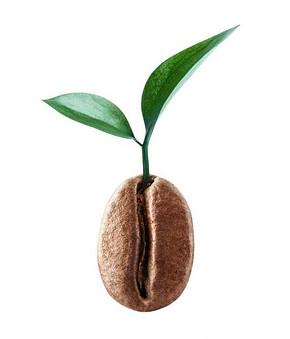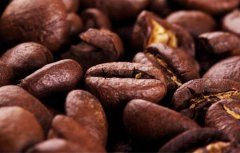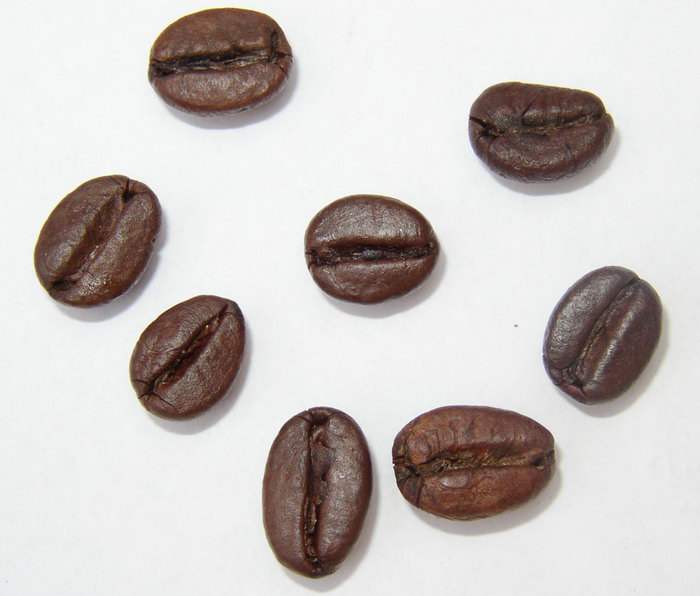Brief introduction of Brazilian pectin sun-dried coffee beans
Follow the caf é (Wechat official account vdailycom) and found that Beautiful Cafe opened a small shop of its own.
Brazilian pectin sun-dried coffee beans
When it comes to solarization, the most widely used is Brazil; the disadvantage of solarization is that it is easy to mix defective beans, and the appearance between beans and beans is poor.
Dry treatment (secado), also known as natural all-day exposure (natural).
Sun drying is one of the ways to treat coffee fruits, which is treated by drying coffee cherries on the sun field for 3-4 weeks after harvest, turning evenly several times a day, so that coffee cherries are evenly heated, and the core and skin of coffee fruit will be separated after dryness. Then remove the pulp and peel with a sheller. And so on, the screening is completed.

There are two methods of fermentation, namely wet hair alcohol and dry hair alcohol, as the name implies, the former adds water, the latter does not add water. In the process of producing alcohol, the seeds and internal pulp will have special changes, which is one of the steps that most affect the flavor of coffee after washing, at this time, the coffee beans are still wrapped in the pericarp, the moisture content is up to 50%, and must be dried. Reduce the moisture content to 12%, otherwise they will continue to be mellow, moldy and rotten. The better treatment is to use sunlight to dry, although it will take 1-3 weeks, but the flavor is very good and very popular. In addition, machine drying is used in some places, which greatly shortens the processing time and makes the flavor inferior to that of sun-dried coffee.
Brazilian coffee fields are endless and are mostly harvested mechanically in order to meet the economic benefits. When 75% of the coffee fruit in the coffee garden turns red, mechanical harvesting is started, followed by the same pre-washing operation, which is moved into the sink to remove floating beans, sift out the sunken beans, and then use a large pulp screening machine to dig out the pulp and remove the pods covered with pectin. The next stage is separate from the washing method: the sticky pods do not need to be moved into the tank to ferment, but to the outdoor bean drying farm. Because of the dry climate in Brazil, the sticky pectin on the pods will harden in about a day or so.
Then use a large number of manpower to turn up and down, so that the pods dry evenly inside and outside, so as not to return to moisture and stink. For about two to three days, with the help of the natural forces of sunlight and dry climate, the pods can achieve a certain degree of dehydration. Then further dry with a dryer, the water content is reduced to 10.5%, and the pods are stored in a special container for about 10 days to further mature, in order to stabilize the quality, remove sheep skins (pods) before export, remove coffee beans, and pack them in stages. The adhesion of the mucous membrane is very strong and is not easy to remove. It must be placed in the slot for about 18-36 hours to make it alcohol and decompose the mucous membrane.
After the coffee fruit is actually picked, it is dried directly in the sun. According to the weather conditions, it is generally necessary to dry the coffee beans for 2 weeks to reduce the water content of the coffee beans to 10%, 12%, and then use a machine to remove the dried peel and pulp. Raw bean processing plants (beneficio) usually retain the parchment shell (parchment; pergamino) on the outside of coffee beans when they are stored and are not removed until they are exported (Costa Rican law stipulates that raw coffee beans cannot be exported with parchment shells). This kind of treatment generally requires sufficient sunshine in the place of origin.
Important Notice :
前街咖啡 FrontStreet Coffee has moved to new addredd:
FrontStreet Coffee Address: 315,Donghua East Road,GuangZhou
Tel:020 38364473
- Prev

How to distinguish the description of color, flavor and taste of deep-roasted Brazilian coffee beans
Follow Cafe (official Wechat account vdailycom) found that the vast majority of Brazilian coffee is sour, sweet, bitter, mild-tempered and versatile. Accompanied by the rich Indonesian Mantenin, there will be a mellow chocolate taste; when matched with fruity and floral African beans, it will highlight special aromas such as fruits and nuts. Work
- Next

Evolution of processing methods of coffee beans in Brazil
Following Cafe Review (Wechat official account vdailycom) found that Beautiful Cafe opened a small shop of its own. First of all, the earliest and most primitive one was tanning. Coffee originated in the Cafa forest in Ethiopia. At first, people who collected coffee did not pick the fresh coffee fruit directly from the tree, but let the sun finish the ripe coffee fruit on the branches.
Related
- Detailed explanation of Jadeite planting Land in Panamanian Jadeite Manor introduction to the grading system of Jadeite competitive bidding, Red bid, Green bid and Rose Summer
- Story of Coffee planting in Brenka region of Costa Rica Stonehenge Manor anaerobic heavy honey treatment of flavor mouth
- What's on the barrel of Blue Mountain Coffee beans?
- Can American coffee also pull flowers? How to use hot American style to pull out a good-looking pattern?
- Can you make a cold extract with coffee beans? What is the right proportion for cold-extracted coffee formula?
- Indonesian PWN Gold Mandrine Coffee Origin Features Flavor How to Chong? Mandolin coffee is American.
- A brief introduction to the flavor characteristics of Brazilian yellow bourbon coffee beans
- What is the effect of different water quality on the flavor of cold-extracted coffee? What kind of water is best for brewing coffee?
- Why do you think of Rose Summer whenever you mention Panamanian coffee?
- Introduction to the characteristics of authentic blue mountain coffee bean producing areas? What is the CIB Coffee Authority in Jamaica?

